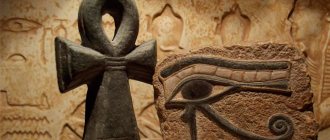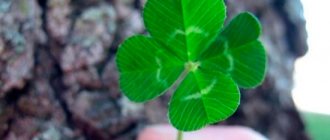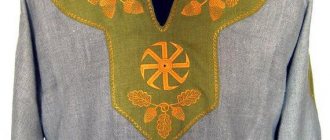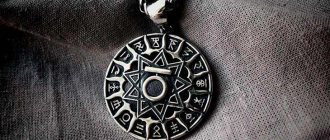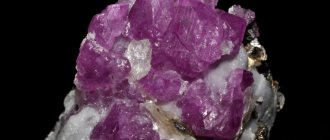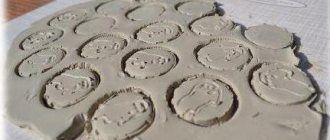For a long time, Tibet was a forbidden country, where travelers, tourists, and foreigners were strictly prohibited from entering. Closedness from the outside world, the difficulties of existence caused by the harsh climate, led to the formation of a special culture, religion, and traditions. Thanks to this, Tibet today calls and attracts people who want to touch the secrets and mysteries of this amazing country. As in other Asian countries, there are many different artifacts and ritual objects intended for performing certain religious actions and practices.
Amulets
Perhaps the most ancient religious objects, found in almost all cultures, are amulets. The first of them appeared in those ancient times, when man was just beginning to recognize himself as a part of a mysterious mystical world. In modern Western countries, amulets are on a par with superstitions. But in Buddhism and some other Asian religions they still remain objects of people’s everyday life.
Sunkhor protective amulets
Tibetan protective amulets go back to tantric secret practices, pre-Buddhist religions, and the Ancient School of Buddhism. The most widespread are sunkhors, which is translated from Tibetan as “protective circle”. They look like round plates made up of several concentric circles with miniature images of symbols, deities, and syllables.
Modern singhors can be images printed on photographic paper, cardboard, woven from colored threads. They can be carried with you, used on an altar, hung in the office, or used to remove external and internal obstacles.
Tibetan amulet tokcha
Followers of Buddhism and Bon religion, widespread in Tibet, Mongolia, Bhutan, Nepal, some regions of China, northern India, use another amulet for protection - tokcha. It is a metal product, usually made of a copper alloy. Ritual objects with similar purposes can be found in other shamanic religions around the globe.
Its protective functions are determined by the symbol, the deity, depicted on the surface. The amulet is worn as a pendant on a cord or chain, for which it is equipped with a special clasp or has a hole.
Musical instruments
The sounds of music contribute to a more acute perception of the surrounding reality, influencing the feelings and consciousness of a person. Therefore, the instruments with which they were extracted have always, since ancient times, been attributed special, magical properties. Our ancestors believed that music allowed them, if not to move, then at least to come into contact with otherworldly forces, to communicate with the souls of dead people and deities.
Buddhist bell
One of the main items, without which almost none of the rituals performed by lamas is complete, is the Tibetan bell. The bell is a symbol of the feminine principle in Buddhism, and is used in conjunction with a vajra - a symbol of the masculine principle.
Bells are usually made from three metals:
- from bell bronze - the bell itself;
- copper alloy – pommel;
- petals made of silver.
Depending on the purpose, musical instruments of various sizes (5-12 cm) are used. Since they are often carried with them, in order to protect the surface and the images printed on it, special covers, fabric or metal, are made for bells.
When purchasing a Buddhist bell, maximum attention is paid, taking into account the accuracy of production, symbols applied to the surface, elaboration of details, tonality, and melody of sound.
Vajra
Each Buddhist bell comes complete with a vajra, also called dorje (Tibet), ochir (Mongolia), kongosho (Japan), jinganshi (China). This is the same iconic Buddhist symbol as the Muslim crescent and the Christian cross. From Sanskrit its name is translated as “diamond”, “lightning strike”, “powerful”, “solid”. It can be said that the vajra is a symbol of the indestructible, indivisible, immovable state of enlightenment, the indestructible weapon of wrathful deities and buddhas.
The bell (feminine) is held in the left, “feminine” hand, and the vajra (masculine) is held in the right, masculine hand. They are used in pairs, matched to each other, symbolizing the perfect, indestructible union of method and wisdom.
Being a symbol of lightning, the vajra is shaped like a trident, double or single, and can have from one to nine rays and teeth.
Tibetan shells
Sea shells have been used as ritual objects in ancient India since pre-Buddhist times. Almost every Indian hero had his own conch shell, which they blew to terrify their enemies. In addition, the shell served as a symbol of wealth and greatness. It was believed that the sounds it made could prevent natural disasters, natural disasters, and pacify dangerous creatures.
In Tibet, shells were used even before Buddhism spread here. With their help, Bon shamans dispersed evil spirits. Good spirits, on the contrary, follow these sounds. They come to where the shell sounds in order to protect and multiply good undertakings.
Today, shells not only signal the beginning of a meeting or religious ceremony, but are also used as musical instruments. The musicians line up near the walls of the monastery at the highest place and begin to blow their conch shells in turn, turning to all 4 cardinal directions. In addition to them, drums and kinvals (small cymbals) are usually used. Each shell has its own tonality. The principles of the game can be learned in Buddhist monasteries, but you can learn the game on your own.
In addition, Tibetan shells are used during ritual ceremonies and religious services as vessels, containers for oils, and sacred water. The shell is considered a symbol of good luck, promoting the rapid spread of the Buddha's teachings.
All musical shells used during ritual activities are of natural origin, so it is impossible to find two identical shells among them. They differ from each other in shape, texture, size. In Tibet, shells are seen as symbols of the feminine, fertility and fertility. They are decorated and inlaid with silver, mother-of-pearl, and stone.
Of particular value are those that have a spiral twisted to the right. And this is due not only to the fact that they repeat the movement of the stars across the sky and are rarely found in nature. Buddha has curls of hair on his head, hair on his body, the navel line, the line between the eyes are also directed to the right.
Singing bowls
Various ritual objects are used during the meditation process. For a long time, fans of Buddha have used singing bowls of various shapes made of metal alloy for this purpose. Since the traditional method of producing bowls is forging, it is very difficult to achieve repeatability of products. They still differ in size, shape, thickness, and therefore the sounds they make differ in tone.
The sound of the bowl fills the surrounding space with energy, but is also a source of vibration. The combination of sound and vibration has a balancing effect on a person and the atmosphere of the room, allowing one to achieve harmony.
What are their amulets made of?
The imagination of the Tibetans was indefatigable - amulets of various shapes, sizes, with images and patterns were made from everything that was available. Thus, there are talismans made of metal, paper, clay, birch bark, fabric, and the most outlandish among them is made of yak bone and its horns. They are placed, hung around the house, worn on the body, or even taken orally as a medicine.
Very strong protective apotropaia are special symbols that are used to paint walls and ceilings in the interior and exterior of a house. They are able to call upon spirits and protect residents or guests. Also, these letters, phrases or mantras can be applied to special canvases and flags flying near the entrance.
Similar amulets with individual phrases written on paper can also be worn on the body. In some cases, special leaves are rolled into prayer balls and then swallowed - it is believed that this can improve health by curing diseases.
More complex are talismans with motifs of deities, pictures shown in sutras, images of religious figures. They promise good luck, longevity, wealth, happiness, and also drive away evil spirits.
Metal objects - made of silver, gold, copper, and their alloys - have powerful energy. They do not need to apply additional images such as mantras or traditional Buddhist signs, because they can fight evil on their own.
From the point of view of the European view and traditional astrology, it is generally accepted that gold corresponds to the Sun, and silver to the Moon. Incredibly, it is only among Tibetans and Germans that the opinion has taken root that the Moon is a male celestial body, and the Sun is female.
Ritual weapons
A little later than man picked up a stone and began to use it to obtain food, he began to use this invention in the performance of various magical rituals and sacrifices. But in those ancient times there was not much difference between a device intended for hunting and a ritual weapon. However, in the process of improvement and modification of religion, rites, and rituals, objects and tools for their implementation began to become more complex.
From the very beginning of its appearance, the production of ritual weapons began to take into account its purpose. Already ancient craftsmen began to decorate their products with bones, skulls, and apply various symbols and patterns on them. Sometimes the appearance of ritual weapons took on a very frightening appearance. This especially applies to those knives and daggers that were used for sacrifices.
Digug
This Tibetan ritual knife serves as a symbol of liberation, “cutting off” unrighteous, evil thoughts, everything that “ties” each of us to a sinful life. It has the shape of a curved knife, a crescent moon, the blade of which is a symbol of wisdom.
Digug got its start from a cutting knife used by ancient cattle breeders of Nepal and India. In total, there are about 17 forms of digugs, which are decorated with stones, precious metals, various patterns, images in the form of flames, mythical animals, which indicates power and protection. A small knife is worn around the neck as a reminder of defeating the ego.
Purba
In Sanskrit its name sounds like “Phurbu” or in our transcription phur-bu, phurba. The word “phurbu” itself is translated as “keel” and means “nail”. It is a small dagger with a massive, heavy, intricately decorated hilt and a short triangular blade. According to the Buddhist religion, it was originally intended to subjugate those people, beings who did not want to obey their destiny, their Dharma. At a later stage, it began to be used as an object that protects the teachings of the Buddha, suppressing anxiety, the energy that causes it.
Each element of the dagger serves as a specific symbol. Thus, the triangular blade, which is three separate blades combined into a single whole, serves to control the three feelings of anger, attachment and ignorance. It allows you to control the past, present and future.
Along the line of connection of the blades, an image of snakes is applied, symbolizing the kundalini energy concentrated at the base of the spine and present in a dormant, unrefined state. By awakening it, a person can reveal the superpowers inherent in him.
The handle can be made in various variations:
- in the form of a vajra, symbolizing hardness, indestructibility, thunder and lightning;
- made in the form of a figurine of one of the extensive list of Lamaist deities;
- as a stylized combination of a vajra and a Buddhist deity.
Adherents of Buddhism consider the phurba to be a symbol of the element of fire, the strength and power of which depends on its size. The larger the dagger, the stronger the magic contained in it, the stronger the blow it inflicts on demonic obstacles. Most often they were used to perform purification rites during the foundation of Buddhist stupas, monasteries, and other religious buildings.
A variety of materials are used to make phur-bu: iron (including meteorite), acacia wood, pink, black, mahogany sandalwood, human or monkey bones, and rock crystal. The most powerful purbs are those found in treasures, treasures, and made from meteorite iron.
How to charge the amulet
Before ordering and buying Dzi beads in Moscow, you should familiarize yourself with the rules for activating the talisman. In order to revive it to work for the benefit of the carrier, it is necessary to perform the following actions:
- First of all, you need to take the bead in your hands, feel its heaviness, strength and power. It is very good if at the moment of the first touch a feeling of calm, warmth and joy comes. This indicates that the bead has “accepted” its owner.
- Next, you need to place the talisman in a saline solution. This measure should be used not only to activate the amulet, but also to cleanse it after exposure to negative energy. While it is being cleansed, you need to read mantras.
- If after the ritual a feeling of goodness and peace settles in the soul, the result has been achieved.
- Immediately after purchase, it is recommended to cleanse the amulet with the forces of two elements, namely water and fire. To do this, just hold it over a candle flame or in running water for a few moments. This measure is to cleanse the fetish of everything extraneous and superficial.
- The most optimal option for activating the amulet is the following - just put the bead under the rays of the rising sun and leave it for the whole day. Taking such an amulet in your hands, you will feel the warmth and peace emanating from it.
As confirmed by various reviews of Dzi beads, the amulet begins to act immediately after its activation.
Ritual masks
In many countries of Oceania, Asia, Africa, and America, ritual masks were used. Ancient people associated them with the spirits of ancestors, animals, and plants. To make them, craftsmen used various available materials: wood and tree bark, animal skin and bones, fabrics, grass, and so on. It was believed that a person, a shaman, who put on a mask, was infused with the soul of the creature that it symbolized. It could be not only a person, but also an animal, mythological or fantastic creature.
Tsam mystery masks
Ritual masks also occur in Tibetan Buddhism. For example, in Tibet itself, Mongolia, and Transbaikalia, during the celebration of the Tibetan New Year, a religious costume mystery “Tsam” is held in Buddhist monasteries. In other countries you can find different sounds of the name Cham, Tsam, Sam, which is translated as dance of the gods. It serves as a means of enlightenment, preparation for a transitional state, and marks the victory of spirit over matter, good over evil.
In order to change for the better, it is not necessary to take part in the dance, it is enough to contemplate and observe how angry deities descended from heaven, dressed in costumes and llama masks, actively gesticulate, wave their arms, move in a circle, performing energetic movements prescribed by strict regulations. The essence of the whole action is to protect people who worship Buddha from evil spirits.
In ancient times, all Tsam masks were carved from wood. Today they are increasingly being replaced by a lighter version, papier-mâché products. The dimensions of the masks are 2-3 times larger than the size of a human face. During the dance, the lamas (monks) look through the holes in the mask that represent the nose and mouth. To do this, they have to tilt the mask back, as a result, others get the feeling that the dancers are looking up into the sky.
Demon masks
Every Tibetan family that worships Buddha has guardian demon masks made of wood or other materials, designed to protect the home from evil spirits. The significance of masks depends on their antiquity, as well as on the material from which they are made. Leather masks are the most valuable. To make them, wild yak skin is folded into several layers, carefully glued and painted. Metal masks are no less important.
Reviews from owners
To get a clear idea of the beneficial effects of this amazing Tibetan talisman, you can read reviews of the 9-eye Dzi bead and other types of talismans:
Irina, 29 years old: “Failures have followed me throughout my life. No matter what business I took on, everything went to hell. From a good friend I learned about wonderful Tibetan talismans, the power of which can help even losers like me. I decided to buy a nine-eyed Dzi bead from Tibet. It was as if my consciousness was telling me that she was the one who could help. I made the choice on a whim. As soon as I picked it up, I felt unity with the talisman, it became a part of my soul. I’ve been wearing it for many years, and in many ways I’m happy, I’ve forgotten about all the failures, I’m haunted by positive emotions and surrounded by good people.”
Anna, 48 years old: “I was forced to buy a Dzi bead by financial problems that came one after another, turning into a huge snowball. I purchased it, activated it and carry it with me almost constantly. The result appeared soon after the purchase. I stopped losing money. Whatever business I take on, it brings, albeit small, but still profit.”
Olga, 18 years old: “My family has been haunted by failures for a long time. Happiness seemed to turn away from us. I turned to healers and fortune tellers, but no results. And one day I heard about wonderful beads. Having touched the amulet for the first time, I suddenly realized that now everything would be fine, it became so calm and comfortable. Now everything has returned to normal in our family, it’s as if we are protected from troubles and adversity by a powerful ancient force. I am incredibly glad that I was able to protect my family by purchasing this unique amulet.”
Alexandra, 45 years old: “My problem is trivial - for many years I could not meet a worthy man with whom I would like to start a family. A friend was able to buy real Dzi beads. This amulet gave me a feeling of peace and serenity. And after some time, a man appeared in my life whom I now call my husband. I’m sure that my talisman will save our marriage for many years.”
Buddha stupa
In Buddhism, special religious monuments are common, which are erected to commemorate some events that are significant for all Buddhists. They have a cone or dome shape. They can be either hollow inside or filled with earth. In Sanskrit these monumental structures are called stupa, in Mongolian – Suburgan, and in Tibetan Choiten, which means “top of the earth”.
The first stupas appeared in ancient, pre-Buddhist times in ancient India, where they were erected at the burial sites of rulers. After the death of Buddha, he was also given royal honors. His body was cremated, and 10 stupas were erected in various parts of India. 8 of them contained the sacred ashes of Buddha, the 9th vessel for cremation, and the 10th one contained the ashes of a funeral pyre.
Today no one knows where exactly these stupas were. But with the spread of Buddhism, these religious buildings began to be built in other countries, including Tibet. In different countries they may differ in shape and have different architectural designs. In Tibetan stupas (Choiten), symbols of fire, moon, and sun, the so-called soyombo, are installed on the tops.
Followers of Buddha believe that stupas have good (positive) magical powers. They bring harmony to people making pilgrimages to stupas, help them cleanse themselves of vices and improve their virtues. People coming to the stupa make from 3 to 108 ritual rounds around it, moving in the direction of the movement of the Sun and after completing each circle, reciting a mantra. This practice is considered magically more powerful than simply visiting a stupa. Rosary beads are usually used to count the completed rounds.
When arranging a home Buddhist altar, it is recommended to install a stupa on it, which in this case serves as a symbol of the Buddha’s mind. For this purpose, small sculptural copies of stupas made of gold, silver, bronze, and clay are used. But you can also use a simple photograph, which is located on the right side of the altar.
Tsa – Tsa
In Tibetan sacred caves, on monastic altars, inside stupas you can see numerous clay or plaster medallions, disks, but which depict various auspicious symbols, stupas, and Buddha forms. They are called tsatsa. Made by casting or pressing, they are intended to facilitate the path to Enlightenment. The resulting images are simply dried in the sun, but sometimes craftsmen fire them in kilns to achieve high hardness.
When viewing, studying, or even making them, positive imprints and thoughts appear in a person’s mind. You can purchase ready-made tsatsas, but the most favorable ones are those that the believer himself made from sacred clay collected during a pilgrimage to holy places.
They are treated as valuable relics, brought home, placed on the altar, and given as sacred pilgrimage gifts.
Basic Tibetan amulets
Mandala for understanding the world
This amulet can be made in any way: sculpted on paper or using colored sand, embroidered or knitted with different threads. Creating mandalas is considered an art that allows you to overcome depression, get rid of stress, and find answers to disturbing questions. The resulting pattern increases mental clarity, calms an overactive mind, and fills the body with strong vibrations. It helps you relax and prepare for meditation.
The technique dates back many centuries ago. Tibetan monks were the first to draw the mandala. They created them in their mountain monasteries and spent a lot of time on it. Sitting for weeks, they drew complex patterns from all possible colors of sand. After finishing, they swept it away to see the secrets of the universe and reunite with other worlds, to recognize the truth of existence in them.
Dzi beads and their meaning
With the help of such elements you can become healthier and richer.
These are individual oblong and tubular elements made of minerals, most often quartz or agate. They are often decorated with designs of eyes, geometric shapes and stripes. Dzi beads should attract wealth, prosperity and health. Popular elements depicting eyes, the number of which carries a certain meaning, which is outlined in the table:
| Number of eyes | Meaning |
| 1 | Strength of character |
| 2 | Clairvoyance |
| Love, well-being in marriage | |
| 3 | Enrichment |
| 4 | Life extension |
| 5 | Good career |
| 6 | Control of emotions |
| 7 | Fame and success |
| 8 | Strength and endurance |
| 9 | Health promotion |
| Protection from death | |
| 10 | Achieving your goals |
| 12 | From fear and anxiety |
| 15 | Luck, wisdom, success |
If you lose a bracelet, then according to legend, it is bad luck. Beads should be worn in the form of a bracelet or kulan, but it should be either in the throat or heart chakra.
The sound of Om and its origin
Buddhists very often recite this mantra during prayer.
According to legend, sound is the first thing the universe said after it was created. This sound is considered to be an interpretation of the divine triad of Shiva, Vishnu and Brahma. Used in Hinduism, Buddhism, Jainism. The Om mantra is most common in Buddhist prayers and meditation. When voicing a mantra, you can make out the 3 sounds that make it up. The sounds “A”, “O”, “M” represent the body, speech and mind of the Buddha. This sound even has an image. It is applied to clothes, houses and even stones. The skin on the upper part of the body is considered ideal. Allows you to find a way out of the most difficult life situations.
Offering bowls
As a sign of respect and gratitude to Buddha, many followers of Buddhism set up an altar at home. It allows you to understand your nature, mind, consciousness. Everything that a person considers especially valuable, he brings to the altar as an offering to the Deities. It is believed that in this way we get rid of stinginess and develop our generosity.
To make offerings, special ritual objects are used - offering bowls. Usually there are 8 bowls on the altar (or 7 bowls and a candle). They are placed in front of the statue of the deity (the main element of the altar) and are used for water, incense, flowers, shells, food, and fragrant water. All these offerings must be carefully monitored and looked after. Flowers should always be fresh, all bowls should be clean. Water and food are changed every day. There are special rituals for filling, emptying and cleansing the bowls.
